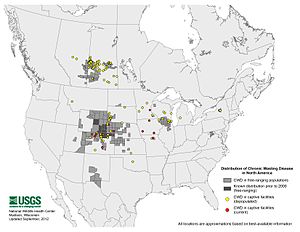 |
| May on the Bourbeuse River - 4 or 5 miles downstream from Reiker's Ford |
|
Okay, we know if you read the entries on Ozark Anglers or hear discussions about the Bourbeuse River in
Missouri, you are likely to hear some reference to a "muddy ditch." We have one answer to those comments - flatly wrong!
I don't mean to be confrontational, but a few comments by my son after dinner reinforced my idea that I should write a little on this often overlooked stream of Missouri's northern Ozark region.
 |
| David Fishing the Bourbeuse R. |
|
|
First of all, the fishing is quite good. Someone is likely to get after us for publicizing this area when it receives so little traffic, but I believe there's a value to the region by doing so - and I will get to that. But for now, let me run down a few of the species that we caught (and released): Largemouth Bass, Smallmouth Bass, Spotted Bass, Sunfish (numerous varieties), Long-nose Gar.
With reference to the bass, the fish we got were numerous and in decent size range. We were not targeting catfish, but there are stretches of the river where the catfishing is quite good.
The water clarity was similar to what we have experienced on the
Big Piney River. It would be an exaggeration to say the fishing is AS good as the BPR, but you will not be disappointed on an average day of fishing the Bourbeuse.
What's more, this little stream is right in the wheelhouse for residents of
St. Louis, St. Charles, Franklin, and several other counties. It is ironic that so many people drive right past it on their way to floats that are hours away and of little additional (if any) quality.
 |
| David Mann awaiting the evening bite on the Bourbeuse R. |
As we sat around after dinner following a short day's float from Reiker's Ford, I asked my son to reflect on this river. He said, and I am paraphrasing, that the river seems to get little in the way of respect for what it has to offer. It is not the stereotypical Ozark stream. It has mile long stretches of water where you could get turned around as to which way is downstream, the current is so slow (read nonexistent). Not only is the river derided by Missouri outdoors people, but this evidence of disrespect can be found at some of the accesses to the river.
 |
| The Bourbeuse offers numerous sandy bars and beaches for camping |
Once you get on the river, and away from Reiker's or other accesses, the scenery is magnificent. High bluffs line much of the river, and where the bluffs are not so close, a canopy of mature deciduous trees create a shady path downstream on a hot day. Numerous sites beckon the camper with soft sand close to awesome cover for an evening's last couple of hours of fishing after dinner.
You are likely to encounter all manners of Missouri wildlife, including many bird species (hawks, herons, and all manner of other species), whitetail deer, and much more. The reminders of civilization are few and far between. From Reiker's Ford access to Mayer's Landing Access, there averages less than a dwelling per river mile. You will occasionally hear the noise of a road in the distance, but generally, you will hear nothing but the birds singing and the gentle sounds of your paddle plying the water on the way downstream.
So why would I wish to spill the beans on this beautiful spot so little traveled? Simply this - the river needs the help of those who would wish for it to remain in its natural state. There is little attention paid to managing properties adjacent to this stream and here, erosion of riverbanks is a problem. I am no expert on rules and regulations regarding what property owners are permitted to do, but apparently one can get away with bulldozing a path straight into the stream, and given the evidence of traffic on both sides, drive across. Further, the area at Reiker's is a literal trash dump. It is absolutely beyond me how one can consume food and drink, then toss the trash over your shoulder. You who do this are reprehensible pigs. I spent some time cleaning up after these "people" on our last trip, and was fortunately able to temporarily erase it from my mind after moving 20 minutes or so downstream.
I always hear the "city folk" (for the record I live in a rural area) blamed for the insanity at the Ozark streams such as the
Meramec and Current, but it s pretty clear to me that it's the locals using these areas for party central that is the problem. I would think they would view their behavior as something akin to defacating in their own yard. I guess not. Anyway, my opinion is that if more sportsmen and outdoor enthusiasts view the Bourbeuse as a place to go, we can get this behavior minimized. I would encourage you to report such behavior to the Franklin County Sheriff's Dept. if observed.
Lest I leave this post on a negative note, let me reiterate that our float was magnificent. We encountered 3 canoes in two full days of floating (two of them were together) and their occupants were as nice as could be. The eleven mile float between Reiker's and Mayer's is enormously dependent on river levels. I have made the float in 4 hours (no fishing) but if you will be fishing, it can easily be made a two day float.
If you are looking for a place in east-central Missouri to really enjoy yourself, why not give the Bourbeuse a try?













































